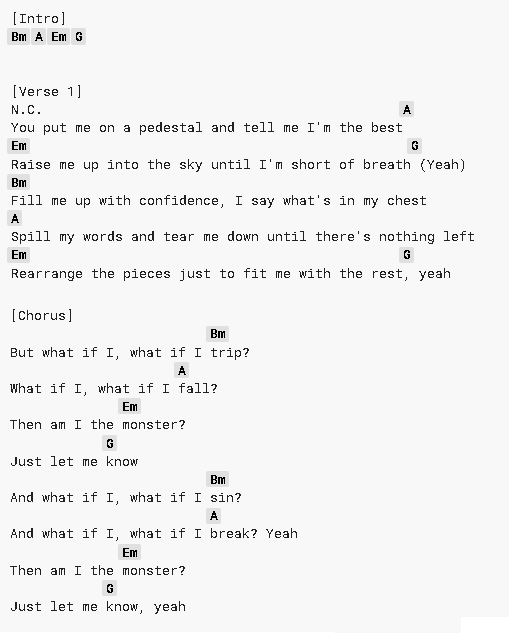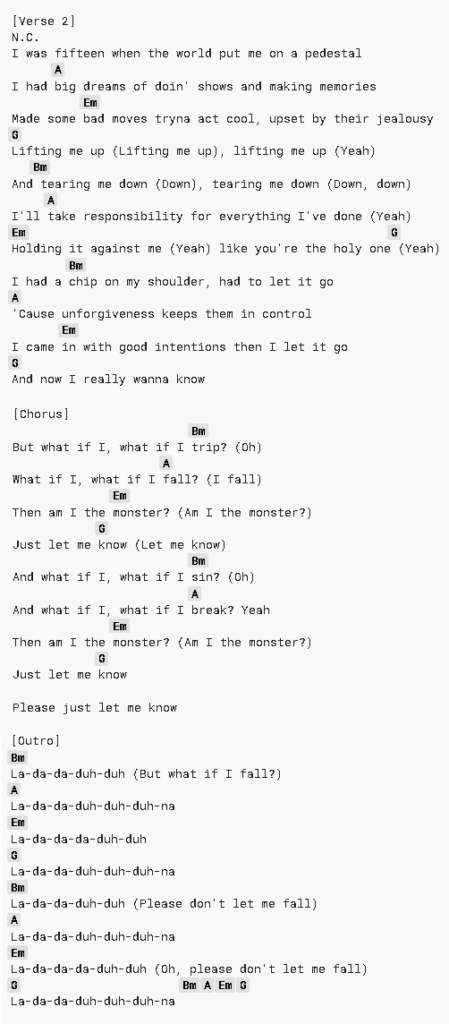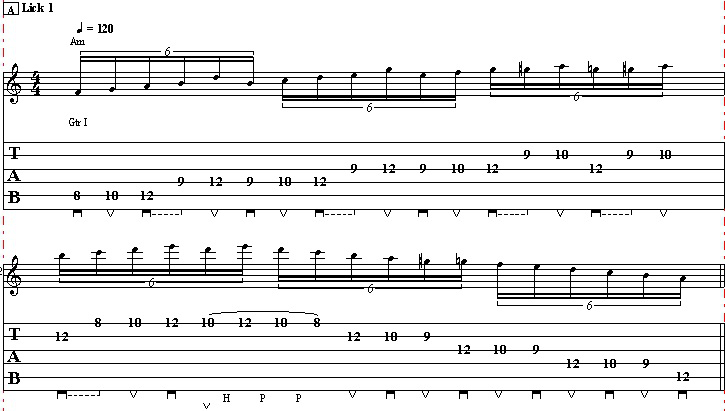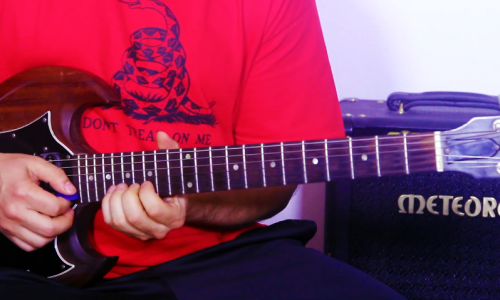

In this lesson from Guitar Control instructor Sean Daniel, demonstrates how to play “Monster” by Shawn Mendes & Justin Bieber on the acoustic guitar. This acoustic version of Monster consists of mainly open chords with the help of a capo on the third fret. Sean, breaks it down to make it easy to play even if you’re a beginner. One of the most important things about this guitar lesson, is the strumming and finger style patterns but with the in depth explanation of the chord progression, timing and key.
Sean makes this version of Monster by Shawn Mendes & Justin Bieber a great song to learn, no matter your skill level is.
Hey, Shawn Daniel here with Guitar Control, today we’re going to learn the song “Monster” by Sean Mendes and Justin Bieber. We’re going to start with a capo on the third fret, and today we will be sounding like this. We’re doing a little bit of a finger style vibe to do an acoustic arrangement representation of this song and it’s really easy because it consist only of four chords, so we’re going to talk about the chords and finger style of vibe.
Check the image above to follow the chords and tabs.
All of this is going to be relative using the capo, we’re going to start with a b minor chord without a capo, this would actually be a d minor chord but we’re going to refer to it as a b minor. Now you don’t have to make this a bar chord, it’s pointer finger second fret on the a string ring finger, pinky four and four on the d and g respectively relative to the capo middle finger third fret on the b string.
We only need the middle four strings a, d, g, b, so you don’t have to bar that high e string. You totally can, if you want to strum it. But we’re going to talk about this chord as a finger style version. Now I’m going to do is to strike the root note with my thumb first and then take my pointer finger, middle finger, and ring finger be responsible for the d, g, and b strings.
So what I’m doing here is getting the root of the chord itself with my fingers and then going down to get a percussive hit. It should be the first section of what we’re doing root, chord, hit, chord, chord again, and then a hit. I’m just doing it on one chord right now, that’s not how the song is arranged but it’s a good way to get the vibe in the flow of what we’re doing in the tempo. After that we’re going to do a major chord which is open a 2, 2, 2, d, g, and b, and then (optional) the high e string. But again we’re not going to hit the high e string; we’re just going to keep that same vibe.
Now I’m going to play it a bar chord, feel free to use it with your fingers like middle finger, ring finger, pinky, or pointer finger middle finger ring finger. It’s going to be the same thing root, chord mute, chord, chord mute, root chord, mute chord, chord mute, and again. When I say the word chord, I’m just thinking of my fingers playing notes at then same time, you can also get the whole chord together with your thumb if you want, or if you’re strumming same deal down, up, mute, up, mute, down, up, mute, so you can play this finger style or play this strum style with the pick, it doesn’t matter if the next chord is going to be e minor, pretty easy open e, 2a, 2g, then open the rest of the way.
The way I’m playing this is, I’m going to skip the a string everything is staying the same except, my root note is going to the low e string. This is the first time I’ve gotten off the a string for my root note, and I’m going e, same thing right as everything else. Then, after that we’re going to stick to that same pattern but going to a g.
This is going to be third fret, the e string middle finger pointer finger second fret of the a string, ring finger third fret of the b string. So the four chords are really, really easy b minor, a major, e minor, g major. One thing I do sometimes is, on the end of every transition I’ll get another kind of mini chord. What I mean by that, is see how I get that mute and after the last percussive hit, and beforehand. It’s totally up to you, it’s totally optional but you can apply the same timing and pattern to strumming, or if you wanted to use a pick.
So we’ll talk about, both ways nothing’s going to change with your fretting hand, it’s just what you’re doing, how you’re attacking those chords with the pick. Let’s talk about the pick version, I’m going to strike the root note of that second fret on the a string and then go down, up, and mute. One, two, and three like that, instead of picking up into the chord I’m going to strum it down. You can create a pretty big dynamic with this, if you do both in the same time a lot of people will do that, like holding pick between the fingers so they can play one way finger style, and then put their pick into playing position to create a bigger dynamic song where part of it, is just a low key like using your fingers.
You can also think of the pick as being your thumb from the same pattern that we just tried and then still get use of your fingers to kind of play the rest of that chord or like kind of using a hybrid style where I’m picking the bass note with the pick and using my fingers. There’s a lot of different ways you can do it, really kind of increase the dynamic range of the song, now you’ll see at the back end of that bar is kind of like a muted b minor, down up, down up, a mute, e minor, that’s something you’ll see a lot of times to keep more of a steady beat whereas, my finger style is more of a chill kind, which represent the original recording of the song, but you can also make this a little more lively by adding that down up, down up, mute, at the end of each section of each spiral.
I think counting this out as two bars of four, but having a count of three and a count of five because you count it as one, two, three, one, two, three, four, five, one, two, three, one, two, three, four, five, one, two, three, one, two, three, four, five, one, two, three, one, two, three, four, and five. That’s how; I would interpret the dynamic of the song, to make an acoustic arrangement of it. You can do a lot of stuff really easy third fret b minor, a major, e minor, g, it just repeats the whole time, but there’s a lot of different ways you can do it. Definitely a fun song to learn, to really get into the mind of Shawn Mendes and Justin Bieber because we have lots in common as I’m sure you do too.
I’m glad that we were able to help you at Guitar Control, so let us know in the comments section if you have any questions, suggestions, or lessons you want to see on or next videos. Make sure you subscribe on our You Tube Channel and we’ll see you in our next video lessons, thanks for watching.



